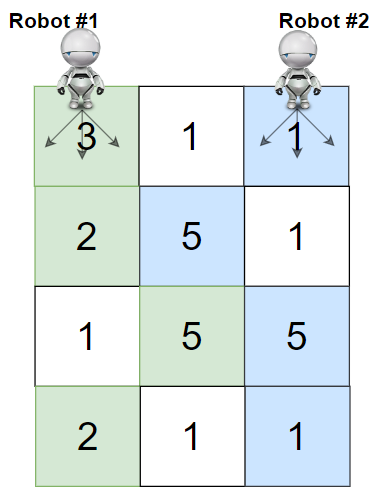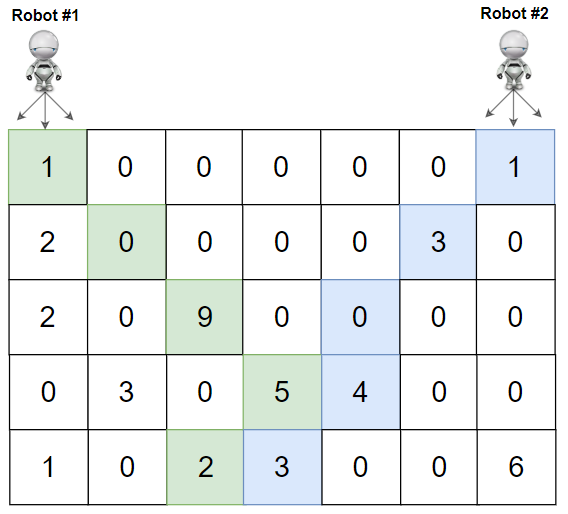1425. Constrained Subsequence Sum
Given an integer array nums and an integer k, return the maximum sum of a non-empty subsequence of that array such that for every two consecutive integers in the subsequence, nums[i] and nums[j], where i < j, the condition j - i <= k is satisfied.
A subsequence of an array is obtained by deleting some number of elements (can be zero) from the array, leaving the remaining elements in their original order.
Example 1:
Input: nums = [10,2,-10,5,20], k = 2 Output: 37 Explanation: The subsequence is [10, 2, 5, 20].
Example 2:
Input: nums = [-1,-2,-3], k = 1 Output: -1 Explanation: The subsequence must be non-empty, so we choose the largest number.
Example 3:
Input: nums = [10,-2,-10,-5,20], k = 2 Output: 23 Explanation: The subsequence is [10, -2, -5, 20].
Constraints:
1 <= k <= nums.length <= 10^5-10^4 <= nums[i] <= 10^4
1 2 3 4 5 6 7 8 9 10 11 12 13 14 15 16 17 18 19 20 21 22 | class Solution { public int constrainedSubsetSum(int[] nums, int k) { Deque<Integer> dq = new ArrayDeque<>(); int n = nums.length, r = 0, ret = Integer.MIN_VALUE; int[] dp = new int[n]; while(r<n){ dp[r] = nums[r]; if(r-k-1>=0 && !dq.isEmpty() && dq.peek()==dp[r-k-1]){ dq.poll(); } if(!dq.isEmpty() && dq.peek()>0){ dp[r] += dq.peek(); } while(!dq.isEmpty() && dp[r]>dq.peekLast()){ dq.pollLast(); } dq.add(dp[r]); ret = Math.max(ret, dp[r++]); } return ret; } } |



